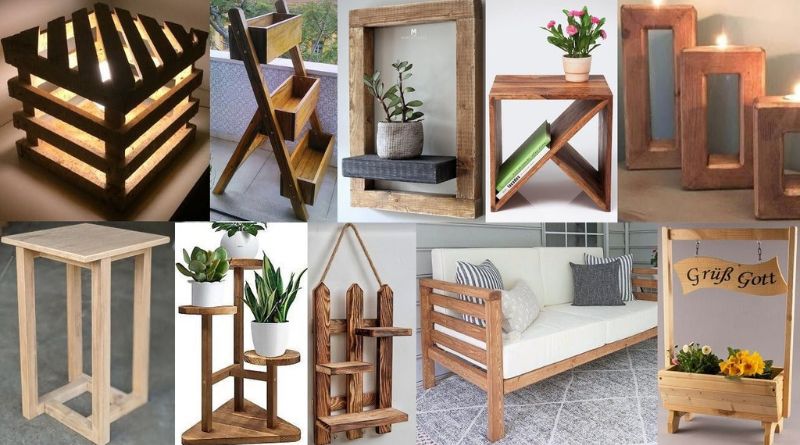Home improvement projects are a great way to enhance your living space, increase the value of your home, and even boost your mood. Whether you’re a seasoned DIY enthusiast or a complete beginner, there’s a project out there that suits your skill level. In this article, we’ll walk you through various DIY home improvement projects, from the simplest tasks to more complex undertakings, ensuring you can find something that fits your experience and comfort level.
Table of Contents
Beginner DIY Projects
1. Painting a Room
Painting is one of the most straightforward home improvement projects, yet it can dramatically transform the look and feel of a space. Here’s how to do it:
Materials Needed:
- Paint
- Paint rollers and brushes
- Painter’s tape
- Drop cloths
- Paint tray
- Primer (if necessary)
Steps:
- Prepare the Room: Move furniture out of the way, cover the floor with drop cloths, and use painter’s tape to protect trim, windows, and switches.
- Apply Primer: If you’re painting over a dark color or painting a light color, a primer will help the new color adhere better and provide a uniform base.
- Start Painting: Begin with the edges using a brush, then use a roller for larger areas. Apply two coats for the best results.
- Clean Up: Remove the painter’s tape while the paint is still slightly wet to prevent peeling, then clean your brushes and rollers.
Tips:
- Choose a paint with a finish that suits the room (e.g., matte for living rooms, semi-gloss for kitchens).
- Start with a small room to build confidence.
2. Installing a Backsplash
A backsplash can add character and style to your kitchen or bathroom. This project is manageable for beginners with a little patience.
Materials Needed:
- Tile sheets or individual tiles
- Tile adhesive or mortar
- Grout
- Tile spacers
- Notched trowel
- Grout float
- Sponge
Steps:
- Prepare the Surface: Ensure the wall is clean and dry.
- Apply Adhesive: Use a notched trowel to spread adhesive on a small section of the wall.
- Place Tiles: Press the tiles into the adhesive, using spacers to keep them evenly spaced.
- Grout: Once the adhesive is dry, apply grout between the tiles using a grout float.
- Clean Tiles: Wipe away excess grout with a damp sponge before it dries.
Tips:
- Measure your space carefully to minimize tile cutting.
- Practice on a small area if you’re new to tiling.
3. Upgrading Cabinet Hardware
Upgrading cabinet hardware is an easy way to give your kitchen or bathroom a fresh look without much effort.
Materials Needed:
- New cabinet knobs or handles
- Screwdriver
- Measuring tape
- Drill (if necessary)
Steps:
- Measure: Measure the distance between the screw holes on your current hardware to ensure the new hardware fits.
- Remove Old Hardware: Use a screwdriver to remove the old knobs or handles.
- Install New Hardware: Align the new hardware with the holes and screw it in place.
Tips:
- If the new hardware requires different hole spacing, you may need to drill new holes and fill the old ones.
- Choose hardware that complements your overall décor.
Intermediate DIY Projects
1. Building a Floating Shelf
Floating shelves are not only functional but also add a modern touch to any room. This project requires some basic carpentry skills.
Materials Needed:
- Wooden boards (cut to size)
- L-brackets or floating shelf brackets
- Screws
- Drill
- Level
- Sandpaper
- Paint or stain
Steps:
- Measure and Cut Wood: Measure the space where you want to install the shelf and cut the wood to size.
- Sand and Finish: Sand the wood to smooth out any rough edges, then paint or stain as desired.
- Install Brackets: Use a level to ensure the brackets are even, then drill them into the wall.
- Mount the Shelf: Place the shelf on the brackets and secure it with screws.
Tips:
- Use wall anchors if you’re not drilling into studs.
- Customize the size and finish to match your room’s aesthetic.
2. Replacing a Light Fixture
Upgrading an old light fixture can instantly modernize a room. While this project involves electrical work, it’s manageable with proper precautions.
Materials Needed:
- New light fixture
- Screwdriver
- Wire nuts
- Voltage tester
Steps:
- Turn Off Power: Switch off the power to the fixture at the circuit breaker.
- Remove the Old Fixture: Unscrew the old fixture and disconnect the wires.
- Connect Wires: Use a voltage tester to ensure no current is running, then connect the wires from the new fixture to the corresponding wires in the ceiling.
- Mount the New Fixture: Secure the fixture to the ceiling with screws.
- Turn On Power: Restore power at the breaker and test the new light.
Tips:
- If you’re unsure about handling electrical work, consult a professional.
- Choose a fixture that matches the style of your room.
3. Installing a Ceiling Fan
A ceiling fan can improve air circulation and reduce energy costs. While this project is more complex, it’s still doable with patience.
Materials Needed:
- Ceiling fan kit
- Screwdriver
- Wire nuts
- Voltage tester
- Ladder
Steps:
- Turn Off Power: Shut off power at the breaker.
- Remove Existing Fixture: If replacing a light fixture, remove it and disconnect the wires.
- Install Fan Bracket: Attach the fan bracket to the ceiling box, ensuring it’s secure.
- Connect Wires: Match the fan’s wires with those in the ceiling and secure them with wire nuts.
- Assemble the Fan: Follow the manufacturer’s instructions to assemble the fan and attach the blades.
- Turn On Power: Restore power and test the fan.
Tips:
- Ensure the ceiling box can support the fan’s weight.
- Balance the fan blades to prevent wobbling.
Advanced DIY Projects
1. Installing Hardwood Flooring
Hardwood flooring adds elegance and value to your home. This project is labor-intensive but rewarding.
Materials Needed:
- Hardwood planks
- Underlayment
- Nails or staples
- Nail gun
- Saw
- Hammer
- Measuring tape
- Level
Steps:
- Prepare the Subfloor: Ensure the subfloor is clean, dry, and level. Lay down the underlayment.
- Measure and Cut Planks: Measure the room and cut the planks to fit.
- Start Laying Planks: Begin at the longest wall and lay the first row of planks, securing them with nails or staples.
- Continue Installing: Stagger the seams in each row and continue installing planks across the room.
- Finish Edges: Trim the final row of planks to fit and secure them in place.
Tips:
- Acclimate the wood to the room’s humidity for a few days before installation.
- Use a floor nailer for faster installation.
2. Building a Deck
Building a deck is a significant project that requires carpentry skills and careful planning, but it can greatly enhance your outdoor living space.
Materials Needed:
- Pressure-treated lumber
- Deck screws
- Joist hangers
- Concrete footings
- Saw
- Drill
- Measuring tape
- Level
Steps:
- Design and Plan: Determine the size, shape, and location of your deck. Obtain any necessary permits.
- Prepare the Site: Clear the area and set up concrete footings for the deck’s foundation.
- Build the Frame: Construct the frame using pressure-treated lumber and secure it with screws and joist hangers.
- Lay Decking: Cut and lay the decking boards, securing them with screws.
- Finish: Sand any rough edges and apply a weather-resistant finish.
Tips:
- Check local building codes for deck construction requirements.
- Consider adding railings or steps for safety and functionality.
3. Remodeling a Bathroom
A full bathroom remodel is a complex project that can significantly increase your home’s value. It involves plumbing, tiling, and electrical work.
Materials Needed:
- New fixtures (toilet, sink, shower/tub)
- Tiles and grout
- Plumbing tools
- Electrical tools
- Saw
- Drywall
- Paint
Steps:
- Plan the Layout: Decide on the layout and style of your new bathroom.
- Demolition: Remove old fixtures, tiles, and drywall as needed.
- Plumbing and Electrical: Install new plumbing and electrical lines if required.
- Install Fixtures: Install the new shower/tub, toilet, and sink.
- Tile and Paint: Tile the floors and walls, then paint the walls and ceiling.
- Finish: Add finishing touches like mirrors, lighting, and accessories.
Tips:
- Consult a professional for complex plumbing or electrical work.
- Plan for potential delays, as bathroom remodels can be time-consuming.



